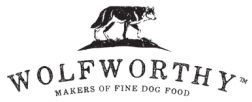
How Can I Help my Dog to Lose Weight?
According to Vets, 45% of dogs are overweight and this figure is climbing. Being overweight can cause a whole host of debilitating diseases, including:
- Arthritis
- Heart Disease
- Diabetes
- High Blood Pressure
- Cancerous Tumours
- Breathing Difficulties
Why Dogs are Getting Fatter
Dogs are getting overweight due to mainly two factors: 1) how much we feed them, and 2) how much exercise we give them. Note well, these two factors are completely under our control. We are the cause, but we can also be the solution.
How to Help Your Dog Lose Weight
Here at Wolfworthy, we recommend a 5 step process to get your pooch back into fighting fit form in no time.
Losing weight for your dog is in principle really simple. Get them to burn more calories than they consume on a daily basis for as long as it takes to reach the target-weight. The tricky part is having a plan, and sticking to it. We will show you how.
Step 1 - Feed a High Quality, High Protein Food
As you are about to reduce the amount of food that your dog eats, it is even more important to ensure that they will still be getting all the essential nutrients they need to build a healthy body. That starts with selecting high quality, high protein food like Wolfworthy. Wolfworthy is an all-natural, grain-free, food that is made from 80% meat and 20% fruit & veg. It does not contain added sugar, added salt, artificial colours, artificial flavours or preservatives. The higher protein content of Wolfworthy will leave your dog feeling much fuller than the grain-packed alternatives because the grain is extremely high in carbohydrates.
Step 2 - Accurately Measure Food
No more guesswork. An accurate measurement of the calories that your dog eats can only be achieved by the accurate weighing of their food. The best way to achieve this is to invest in some digital scales that are accurate to increments of 1 gram. This will allow you to know and track exactly how many calories you are feeding your dog.
Write down and track the amount of food (calories) you are feeding your dog on a daily basis.
Step 3 - No Treats
During the weight loss period cut out all treats. Your dog doesn't need them, and they will only derail your dog's weight loss goals. If you need to treat for training reasons, a high quality, high meat food like Wolfworthy can work just as well, but you must weight the amount you feed so that you know how many calories you are feeding your dog.
Step 4 - Moderate Increase in Activity
All dogs need exercise. They need a daily walk in order to fulfil their primal canine instinct to migrate and hunt. Dogs who don't get a daily walk will not only have weight issues but are more likely to have behavioural issues as well. The amount of exercise they need will be based largely on their breed, with Border Collies needing a lot more than an English Bulldog. Your breed club should have good guidance.
If your dog is not getting the recommended exercise for their breed and age, then a gradual increase will be necessary. However, don't be tempted to increase this exercise by more than 10% per week.
Write down and track the amount of exercise you are giving your dog on a daily basis.
Step 5 - Weigh Once a Week
Daily fluctuations in your dogs will occur due to factors like the amount of water they have drunk and whether they have been for a wee or poo. It is much better to weigh once per week and monitor the trend. Weight loss should be about 1% to 2% of body weight each week.
If you follow these steps your dog will be at the correct weight in no-time
Qty :
Qty :









